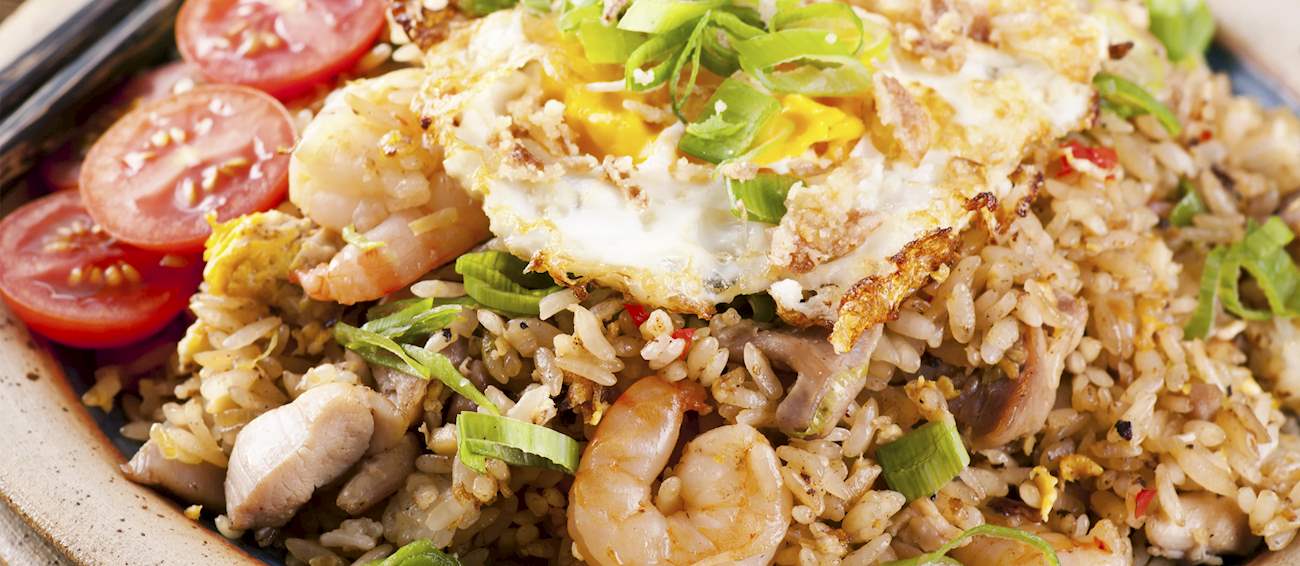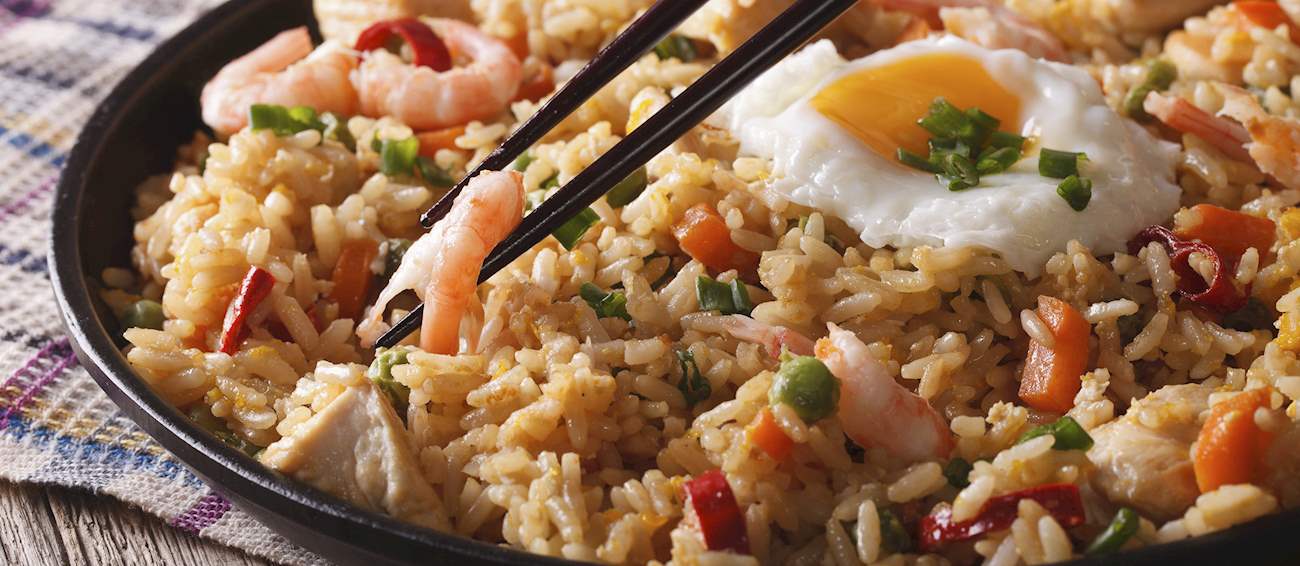Nasi goreng
(Indonesian Fried Rice)
Nasi goreng is often referred to as the Indonesian version of fried rice. Although it is considered to be the national dish of Indonesia, it is also commonly eaten in Malaysia and Singapore. It is believed that the tradition of frying rice in Indonesia came from the Chinese culture, when the trade between the two countries started to develop.
Indonesians adopted the Chinese tradition based on the belief that it is sinful to waste food, and soon, like many other versions of fried rice, nasi goreng was created. Since it was developed out of a practical need, it is usually eaten for breakfast and made with leftover rice from the previous day.
Precooked rice is usually fried in a small amount of oil, then spiced up with shallots, garlic, chili, or ginger. Indonesian fried rice is distinguished by the generous use of sweet soy sauce, and because of that, it has a deeper and spicier flavor than other varieties of fried rice.
Nasi goreng is commonly served with eggs. Usually, they are mixed in the rice or fried and served on the side.
Types of Nasi goreng
Serve with
Kecap manis
Kecap manis is a traditional condiment that's also sometimes used as a cooking sauce. This type of soy sauce is very aromatic and sweetened with palm sugar. The color ... Read more
Recipe variations
Basic Nasi Goreng
READY IN 15minThis essential and fundamental nasi goreng recipe was adapted from rasamalaysia.com and can serve as a base for any other type of nasi goreng. This version suggests placing a well-done fried egg on top of the rice, although it is quite common to top the rice with an omelet as well.
Nasi Goreng with Shrimp and Chicken
READY IN 25minAccompanied by a fried egg and enhanced with fresh shrimp and leftover meat, this version of nasi goreng can be served as a hearty breakfast, lunch, or dinner. The recipe was adapted from the Authentic Recipes from Indonesia cookbook by Oleh Heinz Von Holzen and Lother Arsana, and the dish can be served as an individual meal or as a side dish paired with some fried chicken, beef satay (meat skewers) and krupuk (deep-fried shrimp crackers).
Nasi Goreng Merah Makassar
READY IN 25minThis version of nasi goreng is popular in eastern parts of Indonesia, and its name means simply red fried rice from Makassar. The bright red color is achieved by seasoning the rice with tomato sauce, and unlike other nasi goreng varieties, this one omits terasi paste and kecap manis. The recipe was adapted from primarasa.co.id, a renowned Indonesian cooking website.
Nasi Goreng Kambing Kebon Sirih
READY IN 20minEnhanced with goat meat kambing, vegetable oil ghee, and an array of spices, this version of nasi goreng is popular in the Kebon Sirih area in Central Jakarta. The recipe shows a strong Middle-Eastern and Indian influence.
Nasi goreng Authentic recipe
This essential and fundamental nasi goreng recipe was adapted from rasamalaysia.com and can serve as a base for any other type of nasi goreng. This version suggests placing a well-done fried egg on top of the rice, although it is quite common to top the rice with an omelet as well.



















